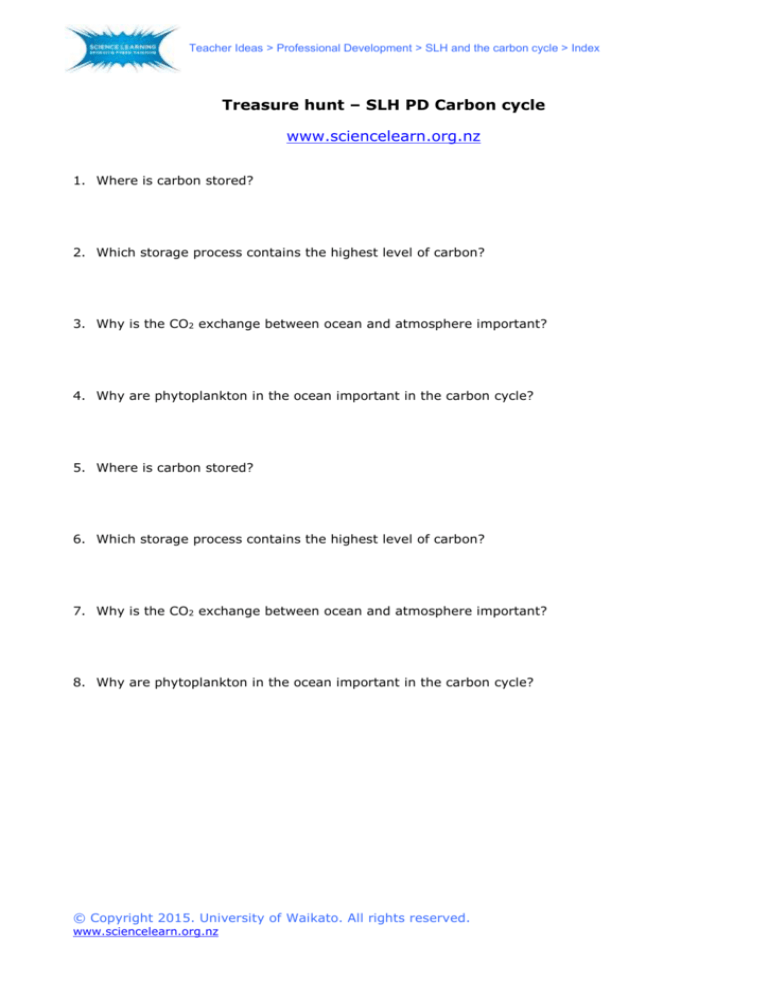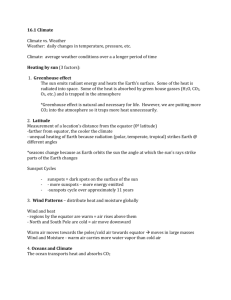
Teacher Ideas > Professional Development > SLH and the carbon cycle > Index
and t
Treasure hunt – SLH PD Carbon cycle
www.sciencelearn.org.nz
1. Where is carbon stored?
2. Which storage process contains the highest level of carbon?
3. Why is the CO2 exchange between ocean and atmosphere important?
4. Why are phytoplankton in the ocean important in the carbon cycle?
5. Where is carbon stored?
6. Which storage process contains the highest level of carbon?
7. Why is the CO2 exchange between ocean and atmosphere important?
8. Why are phytoplankton in the ocean important in the carbon cycle?
© Copyright 2015. University of Waikato. All rights reserved.
www.sciencelearn.org.nz
Teacher Ideas > Professional Development > SLH and the carbon cycle > Index
and t
Treasure hunt – SLH PD Carbon cycle – answers
1. Where is carbon stored?
Atmosphere; plants; coal, oil and gas; soil; sediments and sedimentary rocks; ocean
surface; deep ocean.
2. Which storage process contains the highest level of carbon?
Sediments and sedimentary rocks – 1 000 000 000 000 billion tonnes.
3. Why is the CO2 exchange between ocean and atmosphere important?
The ocean stores 60 times more carbon than the atmosphere so reduces levels in the
atmosphere.
4. Why are phytoplankton in the ocean important in the carbon cycle?
They are tiny plants that absorb CO2, and when they die, they can decompose and return
CO2 to the atmosphere or they can add to the stores in the deep ocean sediments,
reducing the amount of CO2 circulating in the system.
5. Where is carbon stored?
Atmosphere; plants; coal, oil and gas; soil; sediments and sedimentary rocks; ocean
surface; deep ocean.
6. Which storage process contains the highest level of carbon?
Sediments and sedimentary rocks – 1 000 000 000 000 billion tonnes.
7. Why is the CO2 exchange between ocean and atmosphere important?
The ocean stores 60 times more carbon than the atmosphere so reduces levels in the
atmosphere.
8. Why are phytoplankton in the ocean important in the carbon cycle?
They are tiny plants that absorb CO2, and when they die, they can decompose and return
CO2 to the atmosphere or they can add to the stores in the deep ocean sediments,
reducing the amount of CO2 circulating in the system.
© Copyright 2015. University of Waikato. All rights reserved.
www.sciencelearn.org.nz









